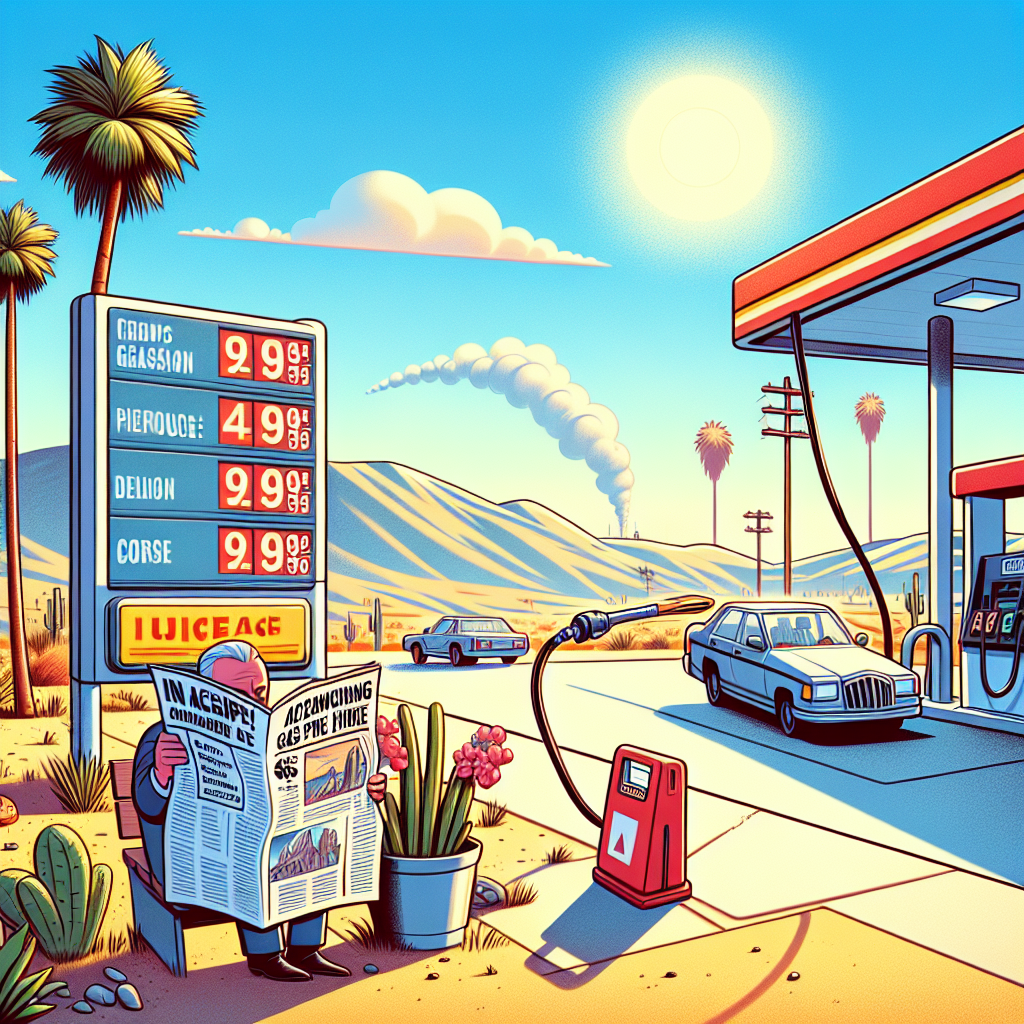Residents in California may face higher gasoline costs after July, but the exact increase remains a topic of speculation and concern. Republican State Senator Brian Jones has called for an audit of the potential “gas price hike,” suggesting an increase of 65 cents per gallon. However, Governor Gavin Newsom’s office released a fact check on June 25, stating that the increase would not reach that level.
As July approaches, consumers at gas stations may see changes in gasoline prices due to higher gasoline consumption taxes and possible increased costs stemming from California’s stricter low-carbon fuel standards amendment. Estimates of the cost increases vary from a few cents to over half a dollar, but the amendment set to take effect on July 1 is still in the approval process.
Starting from July 1, the excise tax on gasoline in California will increase by 1.6 cents per gallon, rising from the current 59.6 cents to 61.2 cents. The California Department of Tax and Fee Administration announced this adjustment at the beginning of June.
California currently has the highest gasoline tax among all states in the U.S. This gasoline tax is levied by the state on gasoline sales and is different from sales tax, federal excise tax, and other fees, including those related to climate initiatives. The federal gasoline tax has been uniform across all states at 18.4 cents since 1993.
According to the Road Repair and Accountability Act passed in 2017, the state gasoline tax is adjusted annually based on the California Consumer Price Index to offset inflation. In that year, the gasoline tax was also raised by 12 cents.
Additionally, starting on July 1, the state gasoline tax on diesel will also increase by 1.2 cents per gallon, rising from 45.4 cents to 46.6 cents.
The costs associated with the low carbon fuel standards mainly involve compliance expenses. Gasoline retailers may pass these costs on to consumers. Unlike taxes, these costs are dynamic and related to various market factors, leading to a range of estimates.
The California Energy Commission estimated in an update on June 23 that the current low carbon standard results in costs of roughly 15 cents per gallon, accounting for about 3% of the total gas price at stations. Other experts have slightly higher or lower estimates.
California is set to implement stricter low carbon fuel standards. The California Air Resources Board (CARB) approved the Low Carbon Fuel Standards amendment on November 8, 2024, setting more stringent emission reduction goals aiming to decrease greenhouse gas emissions in the state’s transportation sector by 30% compared to 2010 levels by 2030 and by 90% by 2045.
While the amendment is expected to take effect in July this year, it is currently still under review by the California Office of Administrative Law, with no official progress announced as of June 27.
The stricter emission standards are projected to raise oil prices, but experts have varying estimates on the extent of the increase.
The CARB released a report in September 2023 assessing the economic impacts of the LCFS amendment. The report suggested that if the amendment is implemented in 2024, gasoline prices could potentially increase by an average of 37 cents per gallon in 2025, raising the LCFS costs from the 2024 level to 47 cents per gallon. The report also estimated that diesel LCFS costs could rise to 59 cents.
After potential price hikes sparked backlash, CARB cautioned against interpreting its own assessments as precise predictions during a media briefing on October 25, 2024. It stated that the estimates based on models should not be seen as definitive, especially considering they only account for compliance costs without considering economic benefits.
Subsequently, in a press release on February 26, CARB presented an estimate of a 10 cent increase per gallon based on the latest analysis from third-party commodity market experts.
The Kleinman Center for Energy Policy at the University of Pennsylvania published a report on October 7, 2024, estimating that if LCFS credit prices reach the maximum level allowed by regulations, gasoline prices may rise by 65 cents per gallon in the short term.
The LCFS credits are part of CARB’s market-based regulatory mechanism to reduce fuel gas emissions. Regulated entities are required to purchase credits to offset excess gas emissions beyond set limits, and these costs could be passed on to consumers, resulting in increased oil prices.
The potential impact on gasoline prices due to the LCFS credits depends on the market factors and could vary. Thanks to the market-based regulatory framework, the California Air Resources Board (CARB) utilizes this system to achieve its targets in limiting transportation fuel gas emissions.
Fuels emitting fewer carbon gases than the CARB baseline standard generate credits, whereas fuels emitting more generate deficits.
The statement cited the University of California, Davis, Low Carbon Fuel Policy Program co-director Colin Murphy, who stated that while stricter emission regulations could lead to price hikes, they are unlikely to reach 37 or 65 cents as projected by some estimates.
Murphy emphasized that his expert judgment indicated that the impact of the LCFS amendment on gasoline prices would likely increase from 8 to 14 cents per gallon in 2024 to 17 to 23 cents per gallon.
Murphy noted that his research indicates that credit prices are expected to remain low for the next five years or longer, due to the surplus of unused credits available in the industry, making it unlikely for credit prices to rise significantly.
He stressed that the LCFS amendment would indeed affect gasoline prices appreciably, and consumers have the right to know about this impact.
In conclusion, the influence of the low-carbon fuel standards amendment on gasoline prices may not necessarily be fully reflected in the receipts at the pump, as oil prices are influenced by multiple factors including production and market dynamics.

